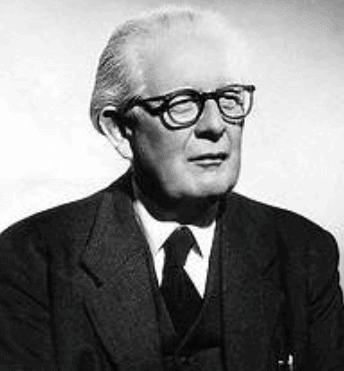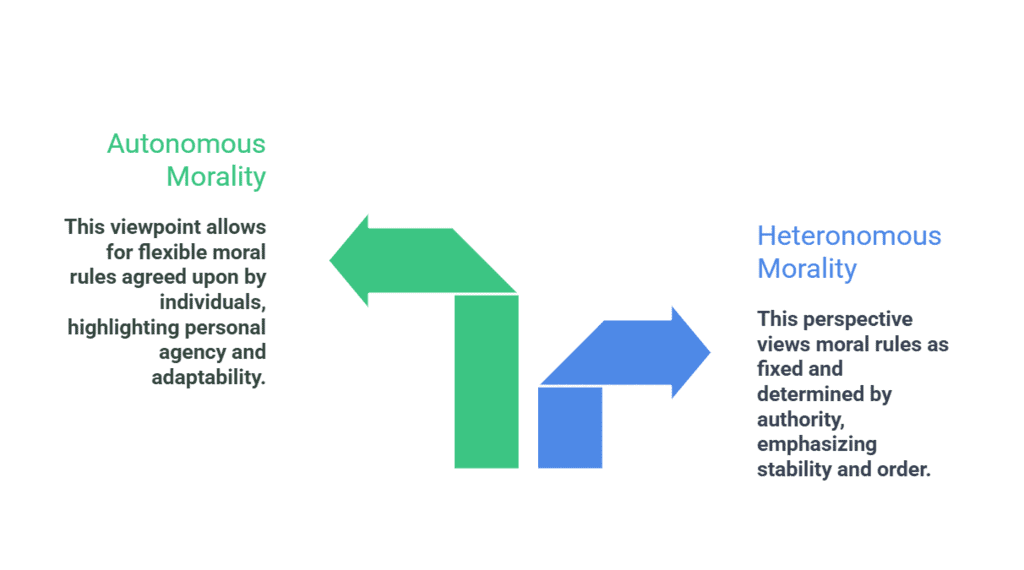Notes: Piaget's Theory of Moral Development | Child Development and Pedagogy for CTET Preparation - CTET & State TET PDF Download
Introduction
Moral development refers to how children learn what is right and wrong in their society, influenced by social norms and laws. Lawrence Kohlberg believed that moral development involves discovering universal moral principles and is connected to a child's intellectual growth. Jean Piaget saw moral development as a constructivist process, where moral ideas are formed by combining actions and thoughts.
In his research, Piaget focused on understanding how children reason about morality rather than their actions, like breaking rules. He explored three main areas of children's understanding of moral issues: rules, moral responsibility, and justice.

Piaget identified two primary forms of moral thinking:
- Heteronomous Morality: Also known as moral realism, this perspective sees rules as fixed and unchangeable, determined by authority figures.
- Autonomous Morality: Also called moral relativism, this viewpoint allows for the understanding that rules can be flexible and are agreed upon by individuals.

Heteronomous Morality (5-9 years)
Heteronomous morality, also known as moral realism, is the belief that moral rules are absolute and set by authority figures such as parents, teachers, or God. At this stage, children believe that morality means strict obedience to these unchangeable rules.
Key Characteristics of Heteronomous Morality
1. Belief in Fixed Rules
- Rules are seen as permanent and unquestionable, much like divine laws.
- Breaking rules is believed to result in immediate and severe punishment, a concept known as immanent justice.
2. Expiatory Punishment
- Punishment is viewed as a way to make the wrongdoer suffer, with the severity of the punishment directly correlating to the seriousness of the offense.
- The focus is on retribution rather than correction.
3. Judgment Based on Outcomes
- Children determine right and wrong based on visible consequences, not intentions.
- Example: A child who accidentally causes greater damage is seen as naughtier than one who causes intentional but minor harm.
Piaget’s Research on Moral Development (1932)
1. Studies on Moral Judgment
- Piaget conducted research where he presented children with moral dilemmas and analyzed their reasoning.
- Example: He told stories about two girls—Marie, who accidentally damaged her dress while helping her mother, and Margaret, who also caused damage unintentionally.
2. Younger Children's Moral Reasoning
- Children under 9–10 years judged actions only by their consequences, not by the person’s intent.
- In Piaget’s study, younger children believed Marie was naughtier than Margaret because the damage she caused was greater, demonstrating their literal interpretation of morality.
3. Understanding of Lying
- Young children judge lies by how far they deviate from the truth rather than their intent or impact.
- Example: A child claiming to have seen a dog the size of an elephant is considered to have told a worse lie than one saying they saw a dog the size of a horse.
4. View of Punishment
- Punishment is seen as a form of retribution rather than a means of learning from mistakes.
- The idea of “an eye for an eye” dominates their thinking—punishment must be harsh enough to deter further wrongdoing.
5. Belief in Immanent Justice
- Children believe that bad actions automatically lead to punishment, even if no authority figure enforces it.
- Example: In one of Piaget’s stories, children assumed that a boy who stole something and later fell off a log was being punished by fate.
6. Justice as a Natural Force
- Young children believe that justice is inherent in nature, meaning that wrongdoers will always face consequences sooner or later.
- They perceive the natural world as an enforcer of moral rules, reinforcing Piaget’s concept of heteronomous morality.
7. Shifting Moral Perspectives
- As children grow older, their moral reasoning evolves.
- Younger children instinctively report wrongdoing to adults, whereas older children start prioritizing loyalty to their friends, indicating a shift toward a more autonomous moral perspective.
Autonomous Morality (9-10 yrs)
Around the ages of 9 to 10, children enter the stage of autonomous morality, also known as moral relativism. During this stage, their understanding of morality shifts significantly. They begin to realize that moral rules are not absolute but are based on personal perspectives and intentions rather than just consequences.
Key Characteristics of Autonomous Morality
1. Shift in Moral Understanding
- Children move beyond self-centered thinking and start considering other people’s viewpoints on moral issues.
- They develop the ability to make independent moral judgments, similar to adult reasoning.
2. Understanding Rules and Fairness
- Rules are no longer seen as fixed and imposed by authority but as agreements among people that can be adjusted through mutual consent.
- They recognize that rules exist to promote fairness and prevent conflicts, not just as strict guidelines.
- Older children often enjoy debating and modifying rules in games and sports, reflecting a more flexible sense of fairness.
3. Judgment of Actions and Intentions
- Moral responsibility is assessed based on both intentions and outcomes rather than just the consequences of an action.
- Example: In Piaget’s study, children judged Margaret as naughtier than Marie, even though Marie caused more damage. This was because Margaret acted with bad intentions, whereas Marie’s actions were meant to please her mother but resulted in unintended harm.
- This indicates that children begin to value subjective factors and internal responsibility in moral judgments.
4. Evolving Views on Lying
- Children differentiate between different types of lies based on intentions and trust.
- White lies, intended to spare someone’s feelings, may be considered acceptable.
- They understand that a mistaken statement is not necessarily a lie; it could be a misunderstanding or a difference of opinion.
- Lying is no longer seen as wrong simply because of punishment but because it damages trust and relationships.
5. Concept of Punishment
- The focus shifts from retribution to reparation—punishment is meant to correct mistakes and promote understanding, rather than simply to make the offender suffer.
- Example: A child who vandalizes something may be asked to repair the damage instead of facing severe punishment.
- They develop a more realistic understanding of justice, recognizing that real-life justice can be flawed, with guilty individuals sometimes escaping punishment while innocent ones suffer.
- Unlike younger children, they reject collective punishment, believing it is unfair to punish innocent individuals for the wrongdoing of others.
6. Influence of Peer Relationships
- Children’s moral references expand beyond parents to include peer groups.
- Peer conflicts require negotiation and compromise, fostering mutual respect and understanding instead of unquestioning obedience to authority.
Critical Evaluation
Piaget's theory of children's moral development is tied to his broader concepts of cognitive development, sharing both its strengths and weaknesses.
Reliability
- Piaget uses qualitative methods like observation and clinical interviews, involving very small samples with non-replicable, non-standardized methods.
- This raises questions about the applicability of his findings to a larger population, as his research is exploratory rather than rigorously testing hypotheses.
Validity
- There is ambiguity in whether Piaget is testing what he intends to test, such as in his story about broken cups where children’s answers may reflect their understanding of reality rather than their beliefs about fairness.
Underestimating Children’s Rate of Development
- Piaget posits that the shift from "moral realism" to "moral relativism" occurs around ages 9 to 10, suggesting younger children do not consider motives in blame.
- However, other studies, like Nelson (1980), indicate that children understand subjective facts and intentions much earlier, even at age 3 with simple stories.
Interpretation of Children's Responses
- The meaning behind children's responses to stories is unclear. Factors such as story comprehension, experimenter pleasing, and response based on actual events versus moral lessons play a role.
Relevance of Piaget's Research
- Piaget's focus on children's moral reasoning is questioned by psychologists who argue that behavior in real situations is more crucial.
- The correlation between attitudes and behavior is not direct, as demonstrated by La Pierre (1934) in his research with a Chinese couple traveling in America.
|
67 videos|154 docs|41 tests
|
FAQs on Notes: Piaget's Theory of Moral Development - Child Development and Pedagogy for CTET Preparation - CTET & State TET
| 1. What is Piaget's Theory of Moral Development? |  |
| 2. How does Piaget's Theory of Moral Development relate to CTET and State TET exams? |  |
| 3. What are the main stages of moral development according to Piaget's theory? |  |
| 4. How can teachers apply Piaget's Theory of Moral Development in the classroom? |  |
| 5. What are the implications of Piaget's Theory of Moral Development for teachers? |  |





















